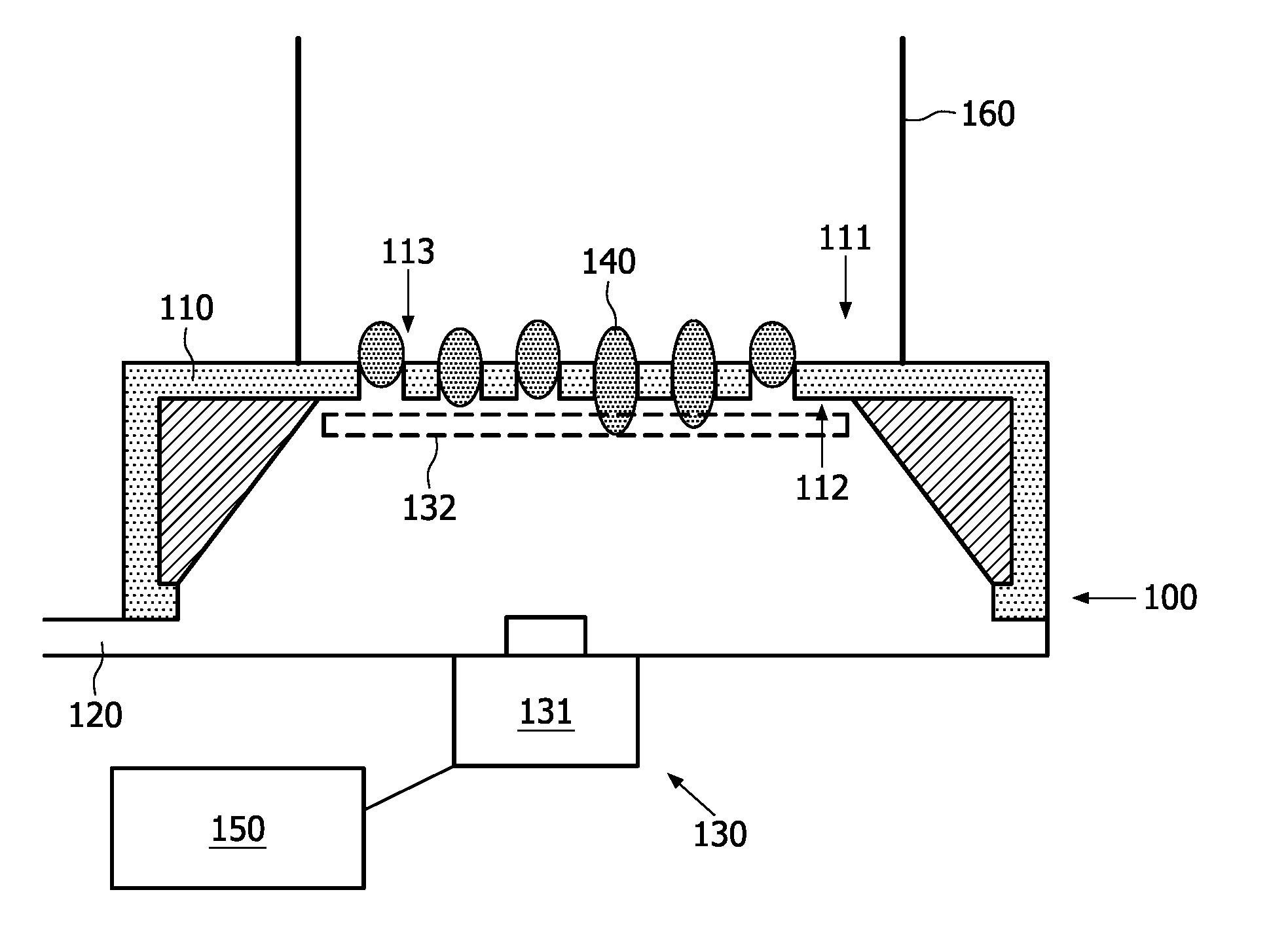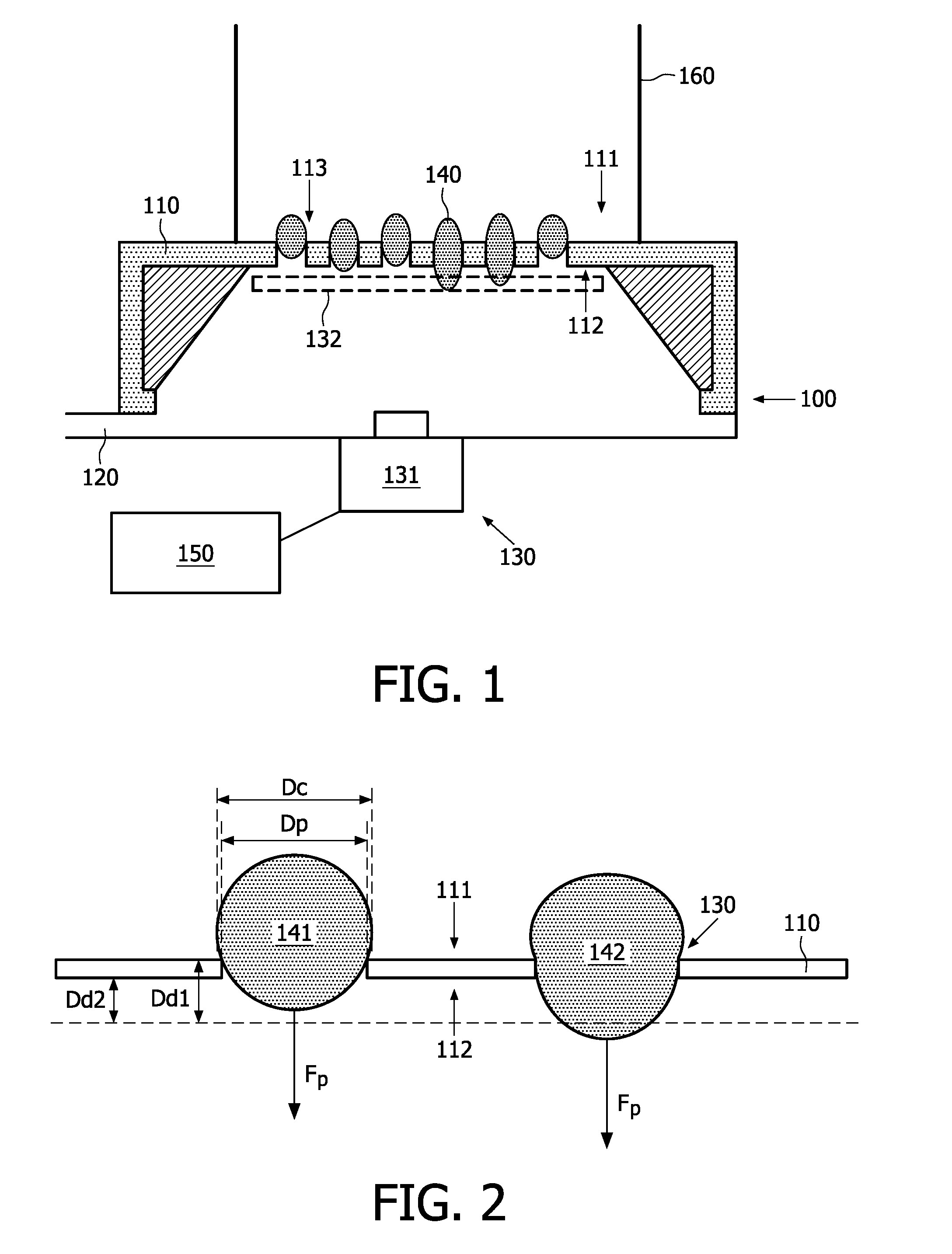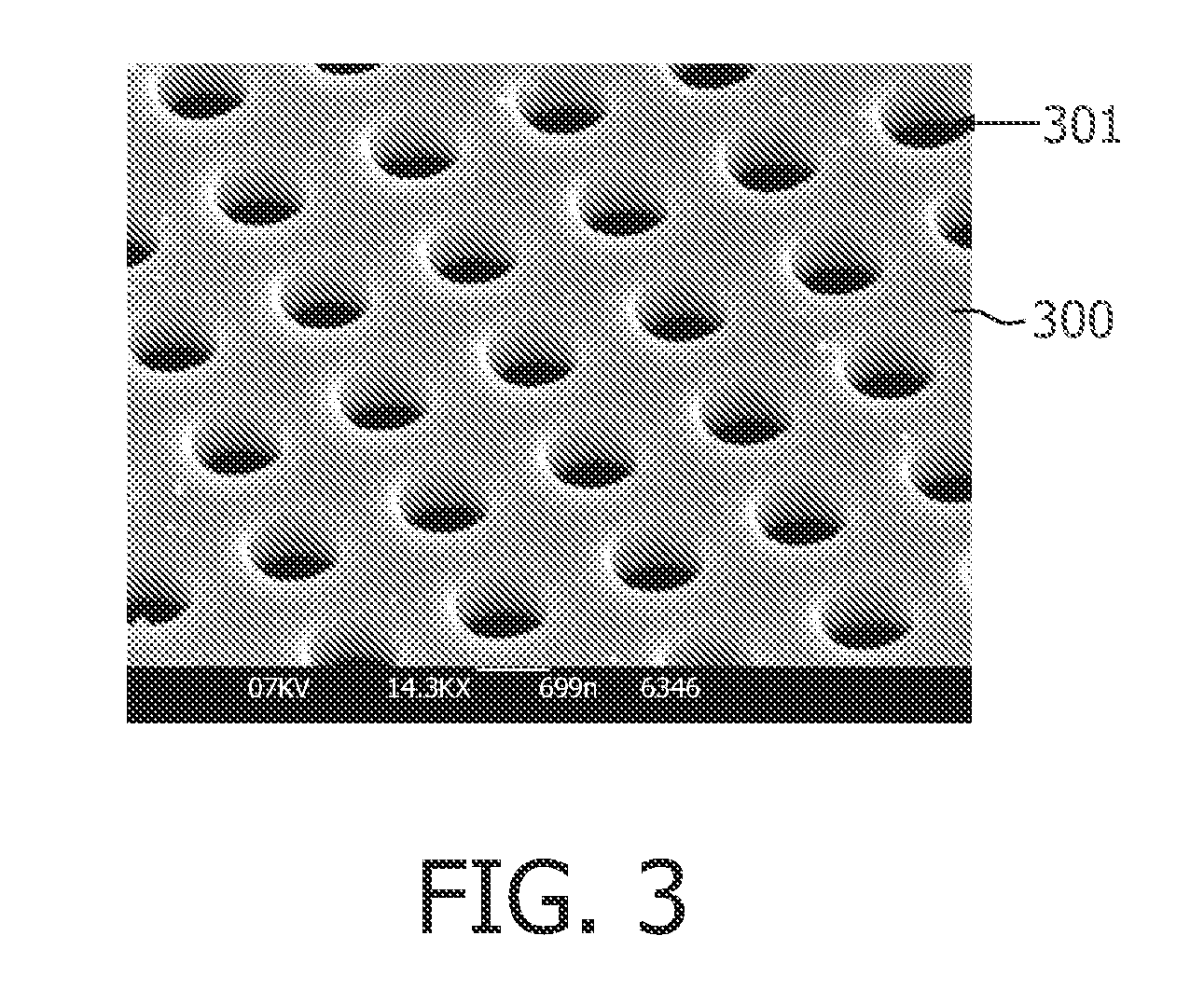Method and system for determining properties of biological cells
a biological cell and property technology, applied in the field of biological cell properties determination methods and systems, can solve the problems of difficult or difficult to determine the distance of extension, the limitations of existing methods for measuring the elasticity of cells, and the limited number of cells investigated per sample, etc., to achieve the effect of easy determination of the distance of extension
- Summary
- Abstract
- Description
- Claims
- Application Information
AI Technical Summary
Benefits of technology
Problems solved by technology
Method used
Image
Examples
first embodiment
[0055]In the first aspect of the present invention, a system for determining properties of particles, e.g. biological particles, as subject of the present invention is provided. An exemplary system is schematically shown in cross-section in FIG. 1. The system 100 comprises a microporous structure 110 having a first side formed by a first major surface 111 and a second side formed by a second major surface 112 of the structure, the structure also comprising a plurality of micropores 113 extending from the first side to the second side. The second side typically may be opposite the first side with respect to the microporous structure 110. The system 100 furthermore comprises a means 120, 160 for generating a fluid pressure difference across the microporous system, i.e. a pressure higher at the first side than at the second side, for deforming particles 140 provided to the micropores and for passing the particles at least partially into the micropores and in this embodiment for retaini...
second embodiment
[0066]In a second embodiment according to the first aspect of the present invention, a system for detecting particle properties as described above is provided, wherein furthermore the system is adapted for taking into account the particle size distribution in the sample. Whereas the particle size is not very relevant if the particle is much larger than the pore, the latter may become more relevant if the particle size becomes of the same order as the pore size. Typically, small particles will bulge further in, through and / or out of the pores than large particles, due to the smaller radius of curvature of their walls. It is, however, possible to correct for the particle size. Using e.g. a transparent microporous structure 110 allows measurement of the particle size by looking through the microporous structure 110, e.g. by using the microscope 131 having small depth of field and determining the particle size from the first side of the microporous structure 110. Typically, transparent ...
PUM
| Property | Measurement | Unit |
|---|---|---|
| pore diameter | aaaaa | aaaaa |
| pore diameter | aaaaa | aaaaa |
| pore diameter | aaaaa | aaaaa |
Abstract
Description
Claims
Application Information
 Login to View More
Login to View More - R&D
- Intellectual Property
- Life Sciences
- Materials
- Tech Scout
- Unparalleled Data Quality
- Higher Quality Content
- 60% Fewer Hallucinations
Browse by: Latest US Patents, China's latest patents, Technical Efficacy Thesaurus, Application Domain, Technology Topic, Popular Technical Reports.
© 2025 PatSnap. All rights reserved.Legal|Privacy policy|Modern Slavery Act Transparency Statement|Sitemap|About US| Contact US: help@patsnap.com



